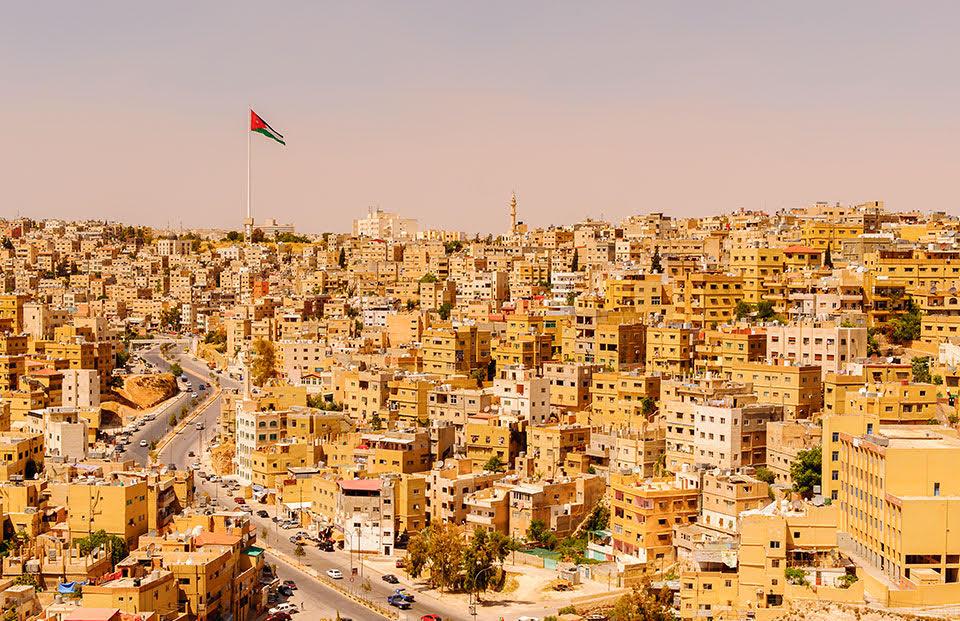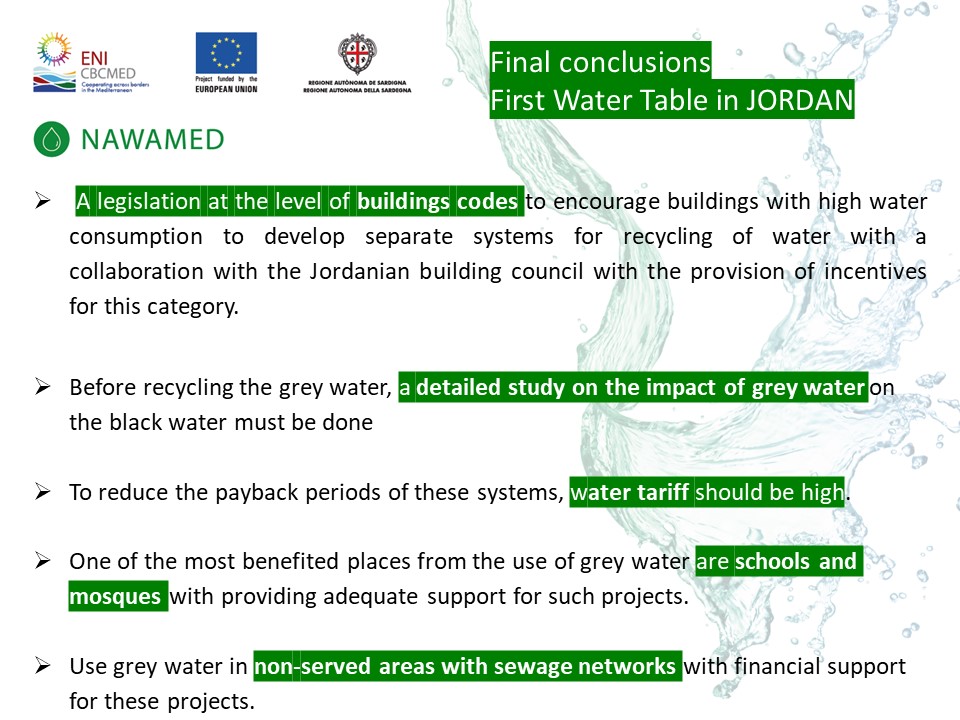NAWAMED encouragera des systèmes séparés de recyclage de l'eau avec des incitations en Jordanie

Ce contenu est disponible uniquement en anglais
During the national meeting organized by the University of Jordan (UJ), on May 27th, 2021, stakeholders identified and debated about specific obstacles occurring within the country/regional context and came up with strategies on how to tackle such obstacles in order to facilitate the application of non-conventional water resource (NCWR) technologies and water-demand management (WDM) practices.
Mr. Marzio Melis (Energy Water Agency of Malta - EWA), partner of NAWAMED and responsible for this activity, presented on the common barriers for the application of NCWR and WDM in the Mediterranean regions. There were a lot of contributions from the Jordanian stakeholders, moderated by Prof. Ahmed Al-Salaymeh (NAWAMED project coordinator at UJ), in order to reach final shared conclusions to face four types of identified barriers: legislative/regulatory, technical, social/public perception and economic/financial.
It is important to select the optimal tank size in order to have water harvesting system practice to be accepted by people. In addition, the unit price has an important impact on the payback period

Furthermore, the high initial cost of greywater treatment system and water harvesting systems make it unaffordable to people.
The NCWR - treated wastewater, saline and grey water - and water harvesting techniques are used to address the challenges facing the development of agriculture in Jordan
The law of the ministry of water and irrigation stipulates that a cistern for storing rainwater must be built as part of any under-construction building.
It is preferable to use grey water in non-served areas with sewage networks after studying the impact of those water on the black water since wastewater in Jordan is high in Biochemical Oxygen Demand (BOD5), Chemical Oxygen Demand (COD), Total Suspended Solids (TSS), Total Dissolved Solids (TDS).







